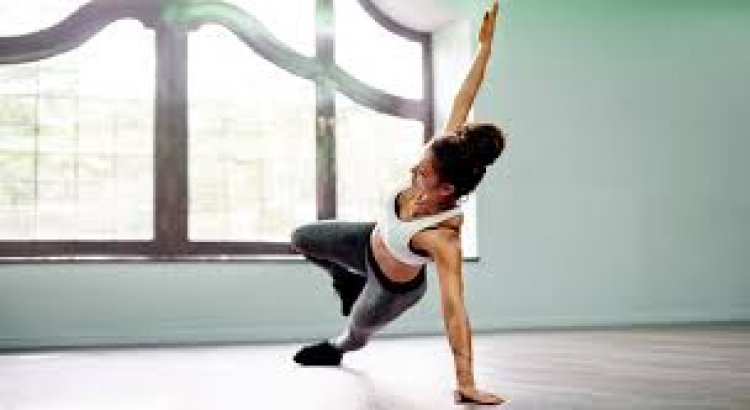6 Exercises Dentists Should Perform Regularly to Stay Healthy
The dental profession can inflict havoc on your back and cause postural issues if appropriate exercises are not performed. Here are 6 Exercises Dentists Should Perform Regularly to Stay Healthy

The dental profession can inflict havoc on your back and cause postural issues if appropriate exercises are not performed. For all of my clients in this profession, I begin by discussing their patient-treatment setup. I discover that dentists are typically seated on a stool with wheels, frequently without back support, with their vertebrae curved and slightly twisted to one side, and their shoulders rolled in. Here we sharing few exercises Perform Regularly to Stay Healthy
I would recommend contemplating a dental chair with back support for times when you are conversing with the patient or completing documents in order to create a more ergonomic setup. You should develop the habit of sitting erect in your chair, as if a string were gently drawing your head toward the ceiling. Your ear lobes should be positioned above your shoulders, and your shoulders should be positioned above your hips. This position alleviates tension on the lower back and shoulders, which would otherwise be under constant strain due to a rounded posture.
The position dentists are in when treating patients can be mitigated by performing these exercises and stretches daily at home or in the office.
6 Exercises Dentists Should Perform Regularly to Stay Healthy
Wall Slides
To remedy slouched posture in which the shoulders are inclined inward, it is essential to strengthen the muscles of the posterior chain to help counteract this position.
Maintain your back against the wall. Keep your heels, buttocks, shoulders, and back of the cranium as near as possible to the wall. While keeping your abdominals minimally contracted and your shoulder blades retracted back and down, perform this exercise. (squeeze your shoulder blades together and maintain the squeeze throughout the entire movement). Place the backs of your upper arms, forearms, and wrists against the wall behind your head. (Fig. 1A). As shown in Figure 1B, while maintaining contact with the wall, attempt to slide the three points down and lower your forearms into your sides. Now repeat by sliding your palms up the wall while maintaining the three points as near as possible to the mirror. Move steadily up and down the wall 10 times per day, twice per day.
Fig. 1A

Fig. 1B

Chest Stretch
Because the shoulder is constantly inclined inward, the anterior shoulder muscles can become very rigid. We must extend these muscles to counteract this rigidity.
While standing in a doorway, place one foot forward and raise your arms so that the inside of your forearm and your palm rest against the sides of the doorway. Your elbows should be at a 90-degree angle, and your upper limbs should be parallel to the ground. Bring your bosom forward slowly until you feel a gentle stretch in the front of your chest and the front of your shoulders. (Fig. 2). Twice per day, hold the mild stretch for 30 seconds each time.
Fig. 2

Hip Flexor Stretch
The anterior hip flexors are a group of muscles located in front of the pelvis. The hip flexors assist in bringing the leg forward and up. Long periods of sitting in a dental chair cause these muscles to contract. We can alleviate this tension by stretching these muscles as shown. (Fig. 3).
While facing away from a stable object that is approximately the same height as the floor of your glute, perform the squat. Bend your left knee and reach behind you to position the tip of your left foot on the object, while keeping your knees close to your body. Continue to move your right foot forward until it is marginally in front of your left. While maintaining an erect stance and a slight backward inclination, contract your left glute. You should sense a mild stretch in the left hip's anterior region. Twice daily, hold the stretch for 30 seconds on the left side and repeat on the right. Remember not to extend it too far. You are only barely leaning back and performing a mild glute contraction to aid in the stretch.
Fig. 3

Thoracic Extensions
By excessively elongating and weakening this region of the spine, bending forward while treating patients can contribute to poor spinal posture. When this occurs, our back becomes rounded and we appear stooped. Exercising the thoracic spine will aid in maintaining an upright posture and a robust middle back region.
Place your hands and knees on the floor to begin. In this four-point position on the floor, place your left palm directly under your left shoulder. Your legs should be bowed at a 90-degree angle on the floor. Your pelvis should be positioned directly above your legs. Place your right palm on the back of your cranium and bring your right elbow as near as feasible to your left elbow by rotating it inward. (Fig. 4A). Open your vertebrae by rotating your right elbow away from your left elbow as you approach or even contact your left elbow. Extend the right forearm to the limit of its extent and squeeze the shoulder blades behind you. (Fig. 4B). Then, rotate your right elbow in towards your left elbow. Ten repetitions of thoracic extension should be performed on each side.
Fig. 4A

Fig. 4B

Plank
Lower back problems are very prevalent in dentistry. This is frequently the consequence of a weak core, which can be caused by the dental chair position.
The plank is an excellent measure of abdominal strength. Place your feet on the ground and your forearms directly under your shoulders to begin. Then elevate your knees, hips and torso off the ground. You should have a straight trajectory from your feet to your cranium. (Fig. 5). Once in this position, it is essential to maintain constant respiration and attempt to endure as long as possible before the body begins to tremble. Start by holding the plank position for 30 seconds and gradually increase the duration to two minutes.
Fig. 5

Double Knee Raise
The double knee raise is an additional exercise for strengthening a weak core. People frequently jump right into a straight leg raise, which is excessive for their initial needs and can be extremely taxing on the vertebrae. I recommend beginning with your knees bowed.
Beginning by lying on your back with your hands at your sides, perform this exercise. Bring your quadriceps up to a 90-degree angle with your pelvis. Now, bow your knees until they, too, form a 90-degree angle. (Fig. 6A). This is the beginning position. Maintain your knees at 90 degrees and steadily lower your hips until your quadriceps are at a 45-degree angle. (Fig. 6B). Try not to go any lower than this, as your lower back will begin to arch and lift off the floor if you do. You should only lower your legs as far as necessary to keep your lower vertebrae on the floor. Start with two sets of 10 repetitions and gradually increase to 15 repetitions.
Fig. 6A

Also read: 8 Yoga Asanas That Can Help With Hair Growth
Fig. 6B

By consistently performing these exercises, you can maintain excellent posture and strengthen your abdominal muscles to prevent lower back pain. OH
Oral Health welcomes this original article.
These 6 Exercises Dentists Should Perform Regularly to Stay Healthy












